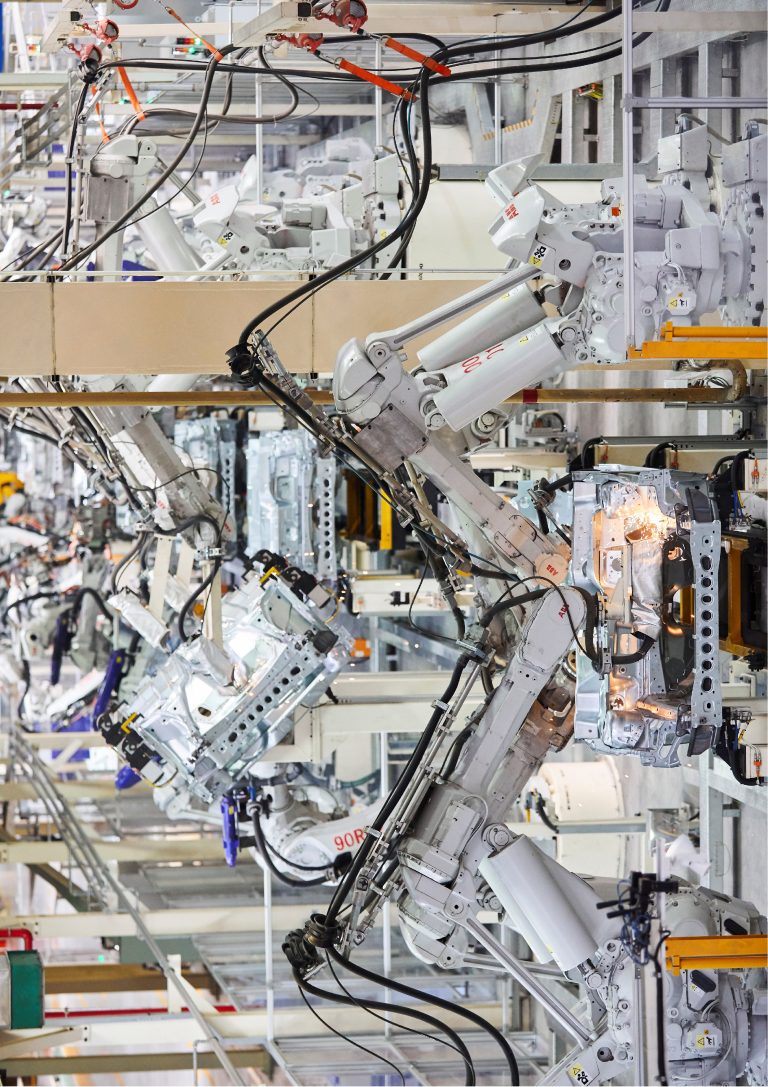Automation trends propel installations to a record 4.28 million robots worldwide.
The latest findings from the World Robotics report reveal a historic surge in the number of robots operating in factories globally, with a total of 4,281,585 units in use reflecting a 10% increase compared to previous years. For the third year running, annual installations have surpassed the half-million mark, a testament to the growing importance of automation in manufacturing processes. The report indicates that Asia accounted for the largest share of newly installed robots, with 70% of deployments occurring in the region. Europe followed with 17%, while the Americas represented 10%.
Asia Dominates Robot Installations
Asia continues to lead the global robotics market, with China cementing its position as the largest user of industrial robots. In 2023 alone, 276,288 robots were installed in Chinese factories, representing 51% of global installations. Although this number is slightly down from the previous year’s record of 290,144 units, it still marks one of the highest levels ever achieved. Notably, the share of Chinese manufacturers in their domestic market has significantly grown to 47%, a remarkable increase from the historical average of 28%. As the operational stock nears 1.8 million units, China remains the only country to have such a large volume of active robots, with expectations for continued growth over the next few years.
Japan, the second-largest market for industrial robots, saw a decline in installations, reaching 46,106 units in 2023, a 9% drop compared to the previous year. Despite this decrease, the demand for robots in Japan is expected to recover in 2025, with steady growth predicted thereafter.
In 2023, South Korea saw a modest reduction in its robot installations, with 31,444 units deployed, marking a slight 1% decline compared to the previous year. This steady demand reflects the nation’s strong commitment to industrial automation.
India’s Fast-Growing Robotics Market
India is rapidly emerging as one of Asia’s key players in robotics. In 2023, the country saw a staggering 59% increase in installations, with 8,510 new robots entering its factories. A significant driver of this growth was the automotive sector, where demand surged by 139%, highlighting India’s rising prominence in the global industrial landscape.
European Market Expands Despite Setbacks
Europe’s industrial robotics market recorded impressive growth in 2023, with installations rising by 9% to reach a record 92,393 units. The European Union accounted for 80% of these deployments, as countries cleared a backlog of delayed projects. The region’s automotive sector played a key role in this growth, particularly in nations like Spain, Slovakia, and Hungary, where installations saw significant increases.
Germany, Europe’s largest market for industrial robots, installed 28,355 units in 2023, a 7% rise from the previous year. Italy, the second-largest market in Europe, experienced a 9% decline, while France saw a 13% drop in installations. In contrast, the UK saw a notable 51% increase in installations, primarily driven by its automotive industry.
North and South America’s Steady Demand
The Americas also maintained strong demand for robotics, with installations exceeding 50,000 units for the third consecutive year. In the United States, 37,587 robots were deployed in 2023, down 5% from the previous year. Despite the decrease, this figure still ranks as the third-highest in the country’s history, with the automotive and metal industries leading the demand. Canada also saw a robust 37% increase in installations, largely driven by automotive investments.
Mexico, another key market in the region, saw a slight decline of 3% in its installations, with a total of 5,832 units deployed in 2023. The automotive industry continues to be the primary force behind demand in the country, representing 70% of the market.
Future Outlook for Robotics
Looking ahead, experts predict continued growth in global robotics installations, despite potential geopolitical challenges. With manufacturers increasingly turning to automation to enhance productivity and maintain competitiveness, the long-term trend is set to persist. By 2024, global robot installations are expected to stabilise at around 541,000 units, with growth accelerating in the following years. As automation continues to play a crucial role in reshaping the manufacturing landscape, the future of robotics looks brighter than ever.


